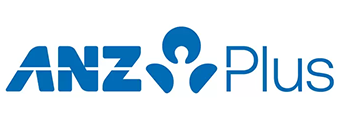Fact Checked
| Lender | Home Loan | Interest Rate | Comparison Rate* | Monthly Repayment | Repayment type | Rate Type | Offset | Redraw | Ongoing Fees | Upfront Fees | Max LVR | Lump Sum Repayment | Additional Repayments | Split Loan Option | Tags | Row Tags | Features | Link | Compare | Promoted Product | Disclosure |
|---|---|---|---|---|---|---|---|---|---|---|---|---|---|---|---|---|---|---|---|---|---|
5.74% p.a. | 5.65% p.a. | $2,915 | Principal & Interest | Variable | $0 | $0 | 80% |
| Promoted | Disclosure | |||||||||||
5.79% p.a. | 5.83% p.a. | $2,931 | Principal & Interest | Variable | $0 | $530 | 90% |
| Promoted | Disclosure | |||||||||||
5.84% p.a. | 6.08% p.a. | $2,947 | Principal & Interest | Variable | $250 | $250 | 60% |
| Promoted | Disclosure | |||||||||||
5.69% p.a. | 5.70% p.a. | $2,899 | Principal & Interest | Variable | $0 | $0 | 60% |
| Promoted | Disclosure | |||||||||||
5.84% p.a. | 5.86% p.a. | $2,947 | Principal & Interest | Variable | $0 | $250 | 60% | Disclosure | |||||||||||||
5.89% p.a. | 6.14% p.a. | $2,962 | Principal & Interest | Variable | $248 | $350 | 60% |
| Disclosure | ||||||||||||
5.92% p.a. | 6.05% p.a. | $2,972 | Principal & Interest | Variable | $null | $300 | 70% | ||||||||||||||
5.93% p.a. | 5.96% p.a. | $2,975 | Principal & Interest | Variable | $0 | $845 | 60% | ||||||||||||||
5.94% p.a. | 5.96% p.a. | $2,978 | Principal & Interest | Variable | $0 | $350 | 80% | Disclosure | |||||||||||||
5.94% p.a. | 6.00% p.a. | $2,978 | Principal & Interest | Variable | $0 | $835 | 70% | ||||||||||||||
6.04% p.a. | 6.15% p.a. | $3,011 | Principal & Interest | Variable | $0 | $799 | 90% | ||||||||||||||
6.19% p.a. | 6.19% p.a. | $3,059 | Principal & Interest | Variable | $0 | $160 | 70% | ||||||||||||||
6.29% p.a. | 6.30% p.a. | $3,092 | Principal & Interest | Variable | $null | $null | 80% | ||||||||||||||
5.74% p.a. | 6.19% p.a. | $2,915 | Principal & Interest | Variable | $0 | $530 | 90% |
| Disclosure | ||||||||||||
5.89% p.a. | 5.91% p.a. | $2,962 | Principal & Interest | Variable | $0 | $250 | 80% | Disclosure | |||||||||||||
6.54% p.a. | 6.63% p.a. | $3,174 | Principal & Interest | Variable | $8 | $350 | 60% | ||||||||||||||
5.79% p.a. | 5.80% p.a. | $2,931 | Principal & Interest | Variable | $0 | $0 | 90% |
April Home Loan Market Update
The RBA may have chosen to keep the cash rate steady earlier this month, but had the board met a week later it's almost certain there would have been another cut.
The US President's 'Liberation Day' tariffs sparked a panic at the dollar disco, with financial markets plummeting as investors priced-in the heightened risk of a global trade war. And while the tariffs on Australia were relatively small, some of Australia's biggest customers (e.g. China) have been whacked hard, putting our lucrative export industries at risk. It could be enough for Australia to slip into a full-blown recession, which is why some (such as NAB's economics team) are now expecting a 50 basis point (0.50%) cash rate cut in May.
The RBA board may be kicking themselves for not cutting this month, especially given the next monetary policy decision isn't until May 20 - a lot can happen between now and then, not to mention a federal election! Perhaps that's why there have been rumours about the potential for an 'emergency' rate cut (i.e. the RBA lowering the cash rate before its next scheduled meeting) in the coming weeks, which hasn't occurred since the onset of the pandemic in March 2020. RBA Governor Michelle Bullock is reported to have had an unscheduled meeting with Treasurer Jim Chalmers, so naturally there's speculation that an emergency cut was discussed - to be a fly on that wall!
If bonds are anything to go by, investors are clearly anticipating imminent rate cuts, with yields plummeting amid the market mayhem. Naturally, this has led several lenders to make large cuts to fixed home loan rates, which are now as low as 5.14% p.a. Some have lowered variable rates too, although not to the same extent.
Home loan holders may be cheering on the prospect of fast and deep cash rate cuts, but I can't help but feel many lenders would fail to pass on such cuts in full to existing borrowers. Thankfully, Australia has a competitive mortgage market, so there's always another lender you can switch to should your current one let you down.
Looking for a different type of home loan?
Finding a home loan can be a challenging. Different circumstances require different loans.
Home Loan Lenders We Compare
Want to learn more about a home loan lender? Explore our in-depth feature pieces including commentary, brand profiles and latest home loan products & rates.
Home Loan Interest Rates in Australia
Like many other developed countries, interest rates in Australia are much higher now than they were during the pandemic, when many lenders were offering home loans for under 2.00% p.a.
Interest rates on home loans have generally followed the trajectory of the cash rate, which is set by the Reserve Bank of Australia (RBA). As the cash rate is increased, rates on loan products typically also increase, and the same relationship applies when the RBA cut rates. From April 2022 to November 2023, the cash rate went from 0.10% to 4.35%, which is the main reason why home loan rates went up so much. Forecasts on the future direction of the cash rate are mixed, with the RBA decisions largely dependent on economic factors such as inflation and unemployment.
Rate increases are not good news for borrowers, but good news for debt-free savers - vice versa for rate decreases.
Lenders tend not to waste any time in passing on the RBA's cash rate rises to mortgage rates, but some are offering much lower rates than others so there are still savings to be had.
Home Loan FAQs
A home loan is a sum of money that's borrowed from a lender to finance the purchase of a home or investment property. The borrower repays this debt with interest in regular instalments over an agreed term, typically 25-30 years. To provide the lender with security, the property is held by the lender as collateral until the loan is paid off - an arrangement known as a mortgage.
The principal amount is the amount you borrow from the lender, and pay back over time - plus interest. Your repayments typically include both principal and interest payments (unless it's an interest-only loan).
- Make more frequent weekly or fortnightly repayments
- Make extra repayments
- Consider refinancing your home loan to a lower interest rate
- Consider an offset account
- Pay off the principal
Equity in a home is the difference between the value of your home and how much you owe on the mortgage. For example, if your property is worth $500,000 and you still owe $300,000, your equity is $200,000. Our equity calculator can help you work out how much equity you have in your property.
The home loan application process can be quite lengthy but isn't too complicated. It will generally involve the following steps:
- Save for a deposit
- Find your perfect home or getting pre-approval first
- Gather your required documents
- Compare home loan providers
- A preliminary assessment by the lender
- Submit your application to the lender
- The lender completes a property valuation
- The lender approves or rejects the loan
- The lender sends you an offer
- The loan is settled and the funds are advanced to you.
Read our home buying checklist for a complete breakdown of everything you need to know.
Fixing your home loan can be good for those who need cash flow certainty, which is why many investors and first-time buyers choose them. If interest rates are very low, locking in that low rate before they rise can be a good idea. However, that can also backfire if interest rates drop even further, as those changes only apply to variable home loans, not fixed home loans. It can also be harder to repay a fixed loan early as you will have to pay significant break costs for terminating the fixed-rate period.
If your current lender can't offer you what you need anymore, it may be time to refinance your home loan. Shop around and compare new home loans, calculate the costs of switching and consider the length of the new loan. Once you’ve found the ideal loan, apply through the lender and exit your old home loan.
A comparison rate helps you work out the true cost of a loan by combining the interest rate plus a number of fees and charges you can expect to pay over the life of the loan into a single percentage figure. If there is a big difference between the advertised rate and the comparison rate on a product, it probably means there are significant establishment or account-keeping fees.
How much you can borrow for a home loan will depend on many factors such as your income, your savings history, your monthly living expenses, and any outstanding debt you may have. However, it is generally recommended that you borrow no more than 80% of the value of the property, meaning you must have at least a 20% deposit saved. Use our calculator to work out how much you can borrow.
A redraw facility is a home loan feature that allows borrowers to withdraw extra repayments they have made on their home loan. Redraw facilities are useful if you want to reduce your loan amount as quickly as possible, while being able to access those funds at some point in the future should a financial emergency or other situation arises where you may need that money (like a renovation).
An offset account is a transaction account linked to your home loan where the money stored in the account is ‘offset’ against your home loan debt when interest is calculated, reducing the amount of interest charged on your loan.
To be eligible for a home loan, you must have:
- A deposit (at least 5%)
- A good credit history
- A stable income
- A regular savings history
- No significant debts
- At least two forms of identification, one of which must be photo ID
- Bank statements and payslips
- Council rates for any other properties you own
For other relevant documents, see the Home Loan's 101
The amount needed for a house deposit varies, but you'll usually need at least 5% of the property's value, which is an LVR (loan-to-value ratio) of 95%. To avoid paying Lenders Mortgage Insurance (LMI) most lenders will require you to provide a deposit of 20% of the property's value.
The time it takes for a lender to approve your home loan can differ from lender to lender, but it generally takes anywhere between four to six weeks. You can speed up your home loan approval by ensuring you meet all the borrowing criteria, have all your paperwork ready and correctly fill out the application form, have a good savings and credit history, and get pre-approval.
Home loan interest rates have risen, but still savings to be had
Interest rates may be significantly higher than they were a few years ago, but you may be able to give yourself a rate cut by refinancing to a better home loan deal.
As you can see from our comparison table, some lenders are offering home loans at much lower rates than others.























































 Denise Raward
Denise Raward




